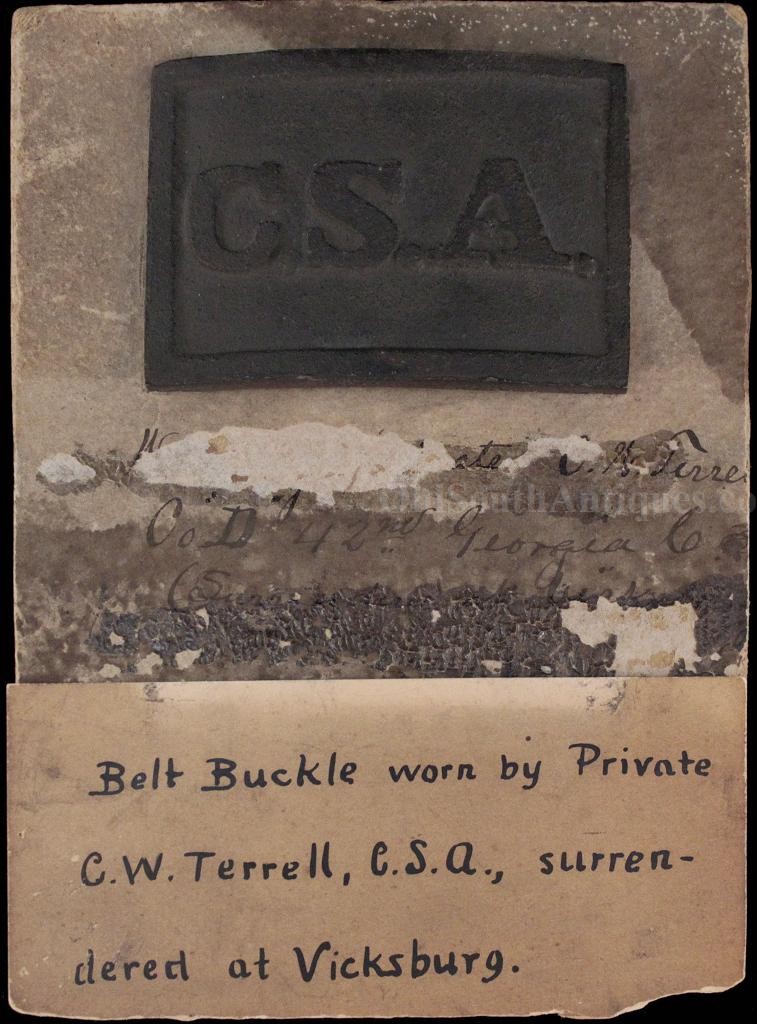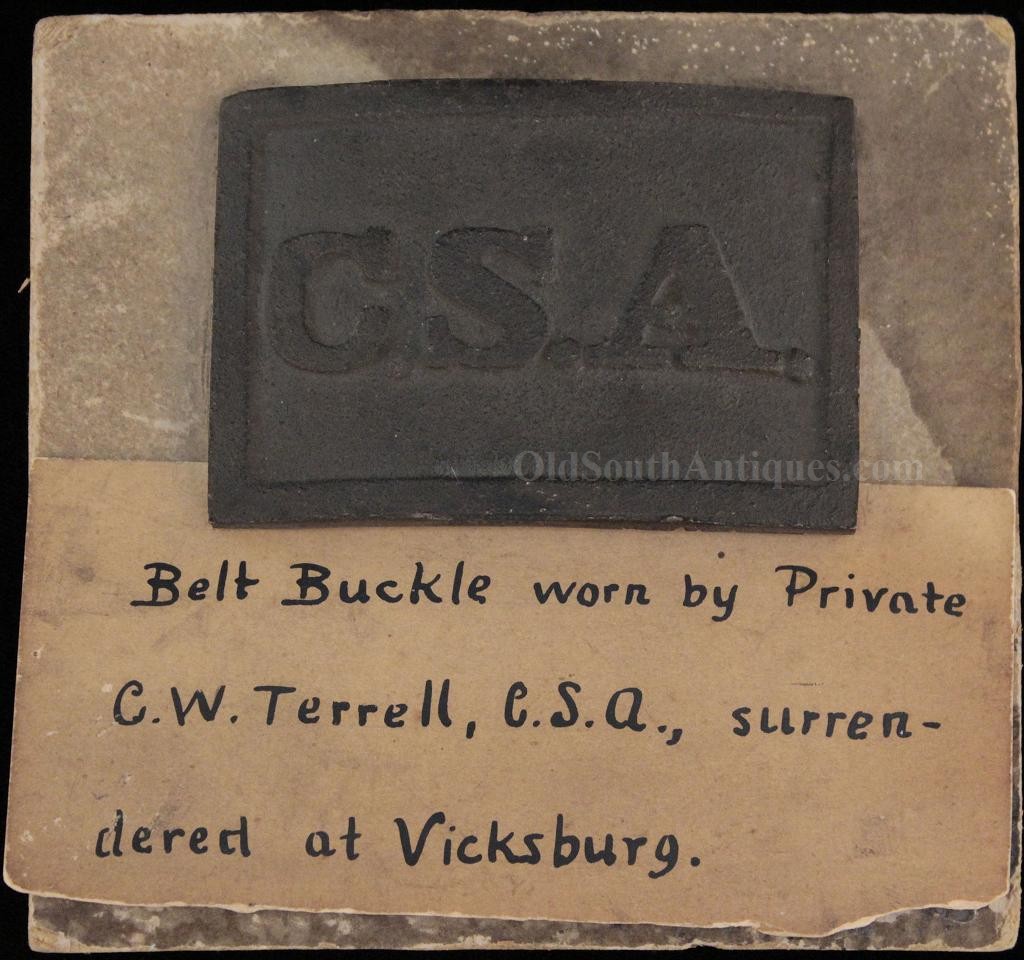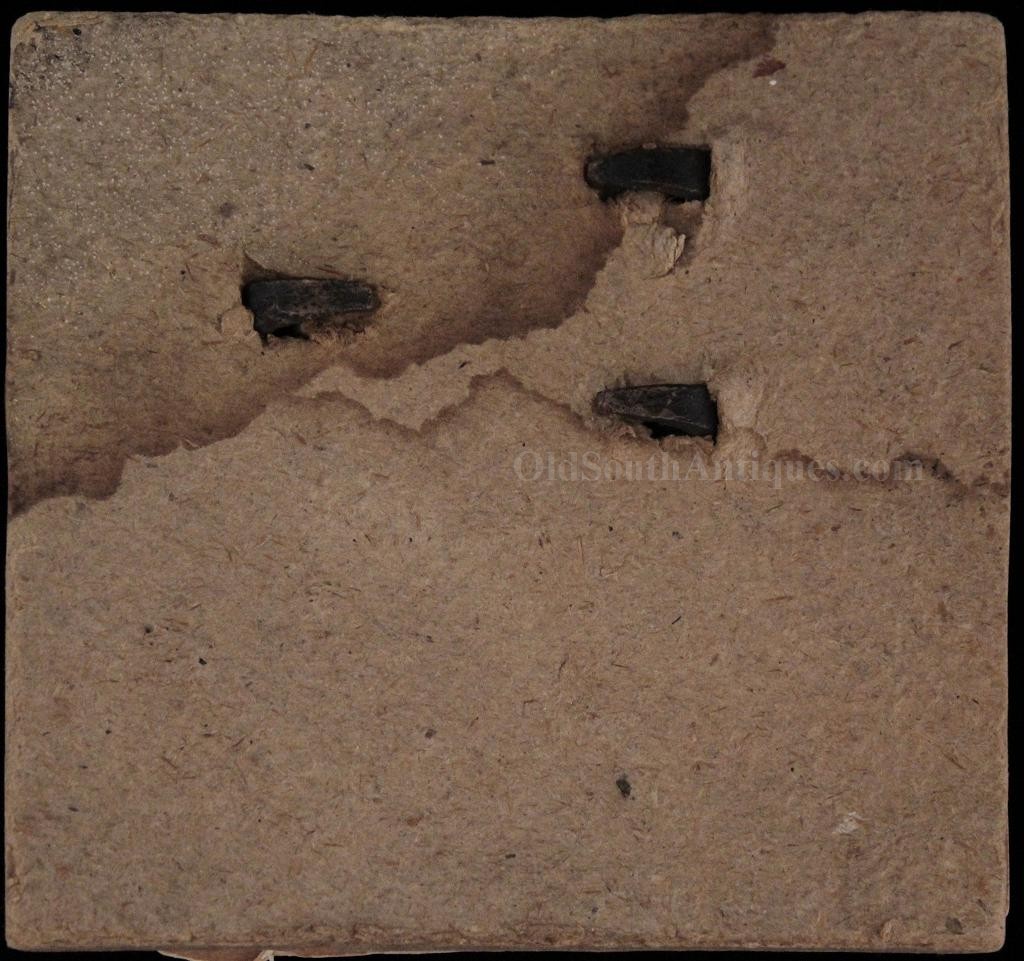
| Catalog | Past Items | Order Info | Terms/Conditions | About Us | Inventory Clearance |
The Atlanta Arsenal Belt Plate is shown here on its original veteran’s display card. A couple of decades after the War and a decade after the end of despotic military rule ended in the South, her Confederate Veterans had recovered enough financially to allow many of them to begin to gather together and reminisce about the tragic days that they had seen in their youth. They had veteran’s groups, referred to as "camps”, similar to today’s Veterans of Foreign Wars (VFW). These were the gathering places in which they displayed some of their sacred relics. Many of the finest Confederate artifacts were saved and some eventually sold into the collector’s market after the veterans died off. Many more were saved in the same way by Grand Army of the Republic Veterans, who had displayed them as trophies of war.
The display card that the belt plate is attached to tells us that this one was saved by the Confederate Veteran and displayed in a Confederate Veteran Camp. The card has been identified twice; once on the card that the plate was attached to, and again on a paper label.
"W(orn by Confeder)ate C.W. Terre- Co. D 42nd Georgia CS (Surrendered at Vicksburg)” It seems that because the writing was on a dark background, and because it was too cramped, another label was made on white paper and pasted over the first. The pasted label reads: "Belt Buckle worn by Private C.W. Terrell, C.S.A., Surrendered at Vicksburg.” It can be readily seen by the "ghosts” on the paper and card that these labels and buckle have been together since they were originally displayed.
27-year-old, Walton County, Georgia native, Cicero W. Terrell enlisted as a private in Monroe, Georgia on July 19, 1861. He was mustered into Company F, 16thGeorgia Infantry and served until November 4th, when he was discharged for disability. However he did not sit on the sidelines long. Recovering sufficiently, he rejoined the Army and entered service as a 2nd Sergeant in Company G, 42ndGeorgia Infantry on March 4, 1862. Subsequently he was captured at the fall of Vicksburg, July 4, 1863 and was sent to Prisoner of War Camp Morton. After eventual exchange, he was wounded in the arm on March 19, 1865 at Bentonville, North Carolina. He surrendered on April 26, 1865 while in the hospital at Durham Station, North Carolina.
Sergeant Terrell died December 19, 1928 in Chattanooga, Tennessee and is buried in that city’s Forest Hill Cemetery.
The belt plate that Sergeant Terrell wore was made by or for, and issued through, the Atlanta Arsenal. The Confederate Arsenal and Depot located in Atlanta, Georgia was a conglomeration of Confederate owned manufactories and independent contractors from the surrounding area. Supplies from other Confederate arsenals were also funneled through the Atlanta Arsenal for distribution to the Army of Tennessee.
While researching at the National Archives, Dean Thomas discovered a very interesting bit of correspondence from the commander of the Atlanta Arsenal:
C. States Arsenal
Atlanta, Georgia
March 3rd, 1863
Mr. Francis Minchener
Atlanta, Georgia
Sir:
You will please to make for this Arsenal four thousand belt plates as per the sample furnished—to be plain and well gotten up, the letters C.S.A. to be plain and neatly finished, the casting to be substantial and good, the hooks on the plate to be strong, and well pointed and the whole to (be) in good taste and style, -to be inspected before they are received.
I will pay you fifty cents each for all received.
Very resply.
Yr. obt. sert.
M.H. Wright
Major Comdg.
At the time the above order was written, the Atlanta Arsenal and its affiliates were producing 90,000 uniform garments and 15,000 pair of shoes per month. This would indicate that Minchener’s belt plate production was only a very small proportion of the plates contracted for by the Atlanta Arsenal. There are at least seventeen slight variations of belt plates attributed to the Atlanta Arsenal. From Major Wright’s order to Minchener, we can assume that a sample pattern was sent to various foundries in and around Atlanta. Thus, accounting for the many variations encountered.
Copyright © 2024 OldSouthAntiques.com All Rights Reserved.
Privacy Policy | Terms of Use
Powered by Web-Cat Copyright © 1996-2024 GrayCat Systems


